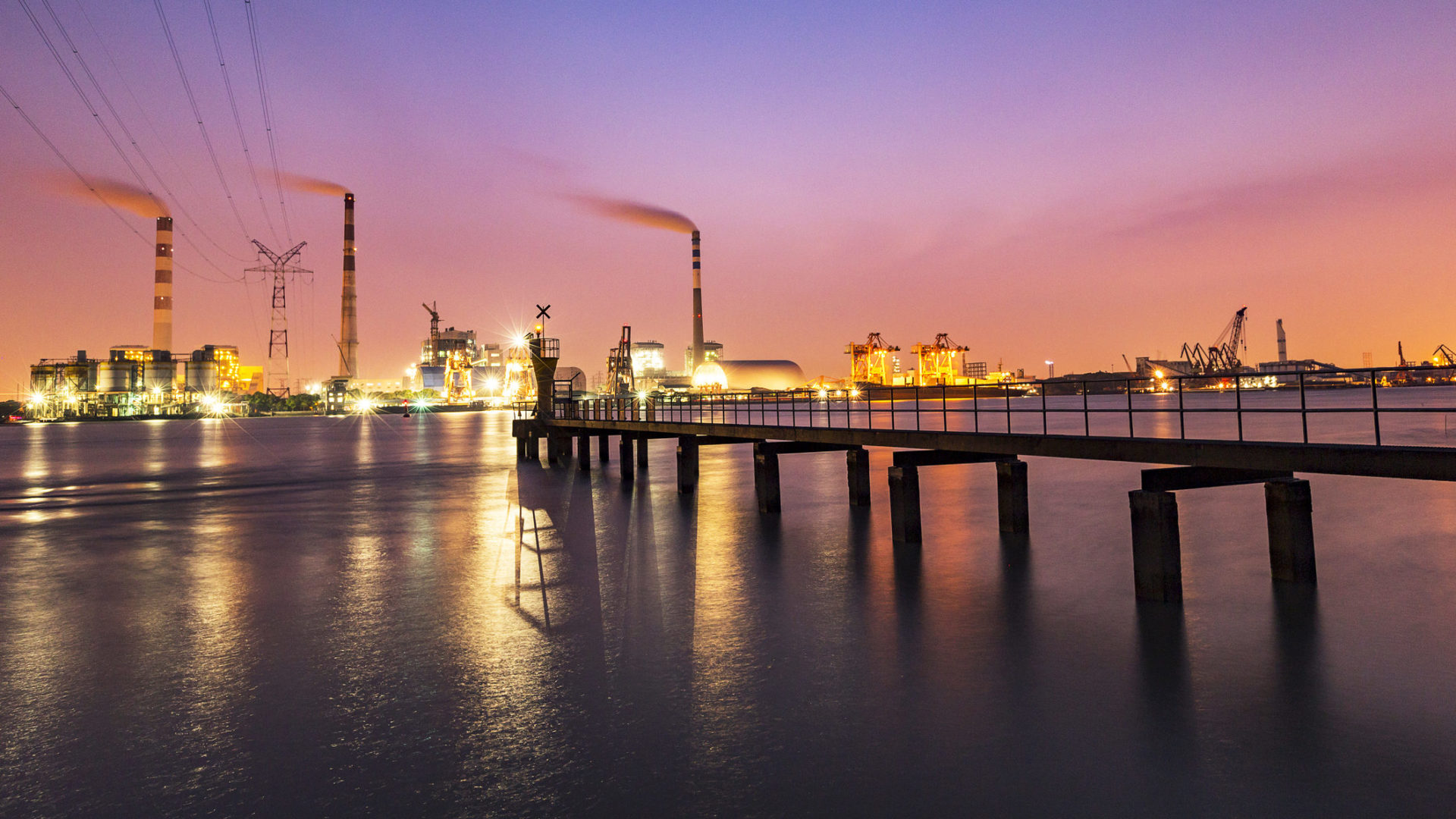To sign up to receive the latest Canadian Energy Centre research to your inbox email: research@canadianenergycentre.ca
Download the PDF here
Download the charts here
Overview: A Canada advantage on LNG exports
Global consumption of electricity increased from 13,195 terawatt-hours in 2000 to 27,005 terawatt-hours in 2019 and estimates are that demand will rise to 35,000 terawatt-hours by 2040.¹
Coal continues to maintain its position as the largest source for electricity generation, with approximately 10,000 terawatthours of electricity currently generated by coal-fired plants. In recent years electricity generation by coal declined in the United States and Europe. However, growth continued in China and other parts of Asia.
Currently,
- 31 per cent of Japan’s electricity comes from its 140 coal plants;
- 41 per cent of South Korea’s electricity comes from its 80 coal plants;
- 65 per cent of China’s electricity comes from its fleet of 3,000 coal-fired plants; and
- 73 per cent of India’s electricity comes from its 850 coal plants.
Natural gas exports from Canada can help facilitate coal-to-natural gas conversion and thus CO2 reductions in Asia. Canada’s first export project, LNG Canada, is currently under construction, while three additional facilities are proposed in British Columbia including Kitimat LNG, Tilbury LNG and Woodfibre LNG.
Importantly, Canadian LNG export projects have an advantage given the shorter shipping distance from Canada’s west coast ports to select ports in Asia. For example, the distance from the U.S. Gulf Coast to the Japanese ports of Himeji or Sodegaura is more than 9,000 nautical miles, compared to less than 4,200 nautical miles between those two Japanese ports and the coast of British Columbia.
The development of Canadian LNG projects not only creates economic opportunity in British Columbia and across the country; supplying Canadian natural gas to displace coal-fired power in the Asia-Pacific region will help reduce global carbon emissions.
Background: Electricity generation from coal-fired plants
Electricity is currently generated using energy sources including oil, natural gas, nuclear, coal, hydropower and renewables (wind, solar and other). Coal-powered generation currently represents about 36 per cent of the installed power generation capacity in the world (see Table 1).
1. The IEA World Energy Outlook 2020 states that nearly all of the increase is attributable to growing electricity consumption in developing countries across southeast Asia and Africa.
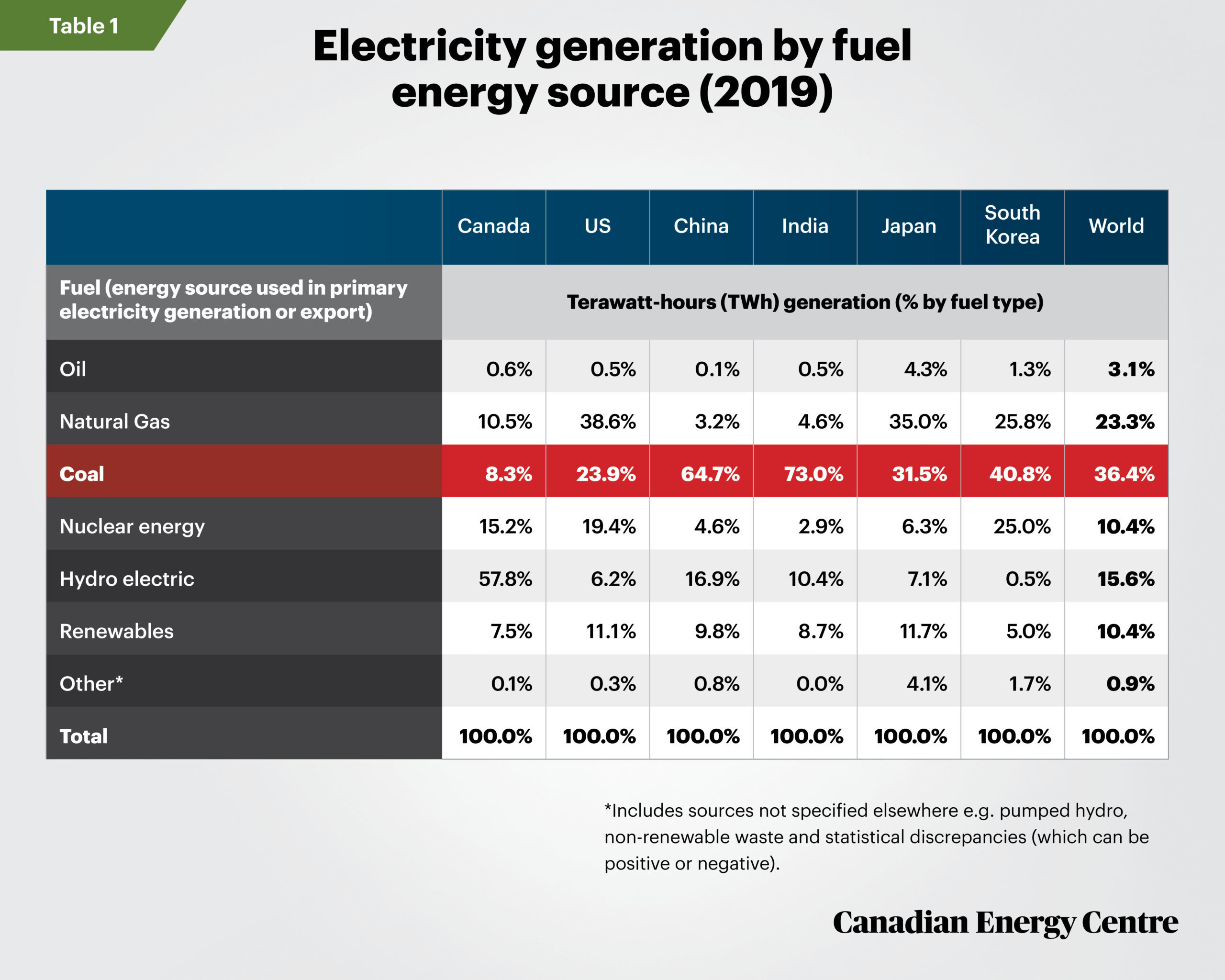
Source: BP Statistical Review of World Energy Database.
Greenhouse gas emissions: Canada and select Asian countries compared
Total worldwide energy-related CO2 emissions were 33.5 gigatonnes (Gt) in 2018 (IEA 2020). Of that, Canada’s total energy related CO2 emissions were 0.6 Gt or 1.7 per cent of the global total.
That compares to emissions of 0.6 Gt in South Korea, 1.1 Gt in Japan, 2.3 Gt in India, and 9.6 Gt in China (see Figure 1). Canada’s energy-related carbon emissions were 4.2 per cent of those four countries’ total energy-related carbon emissions (13.6 Gt).
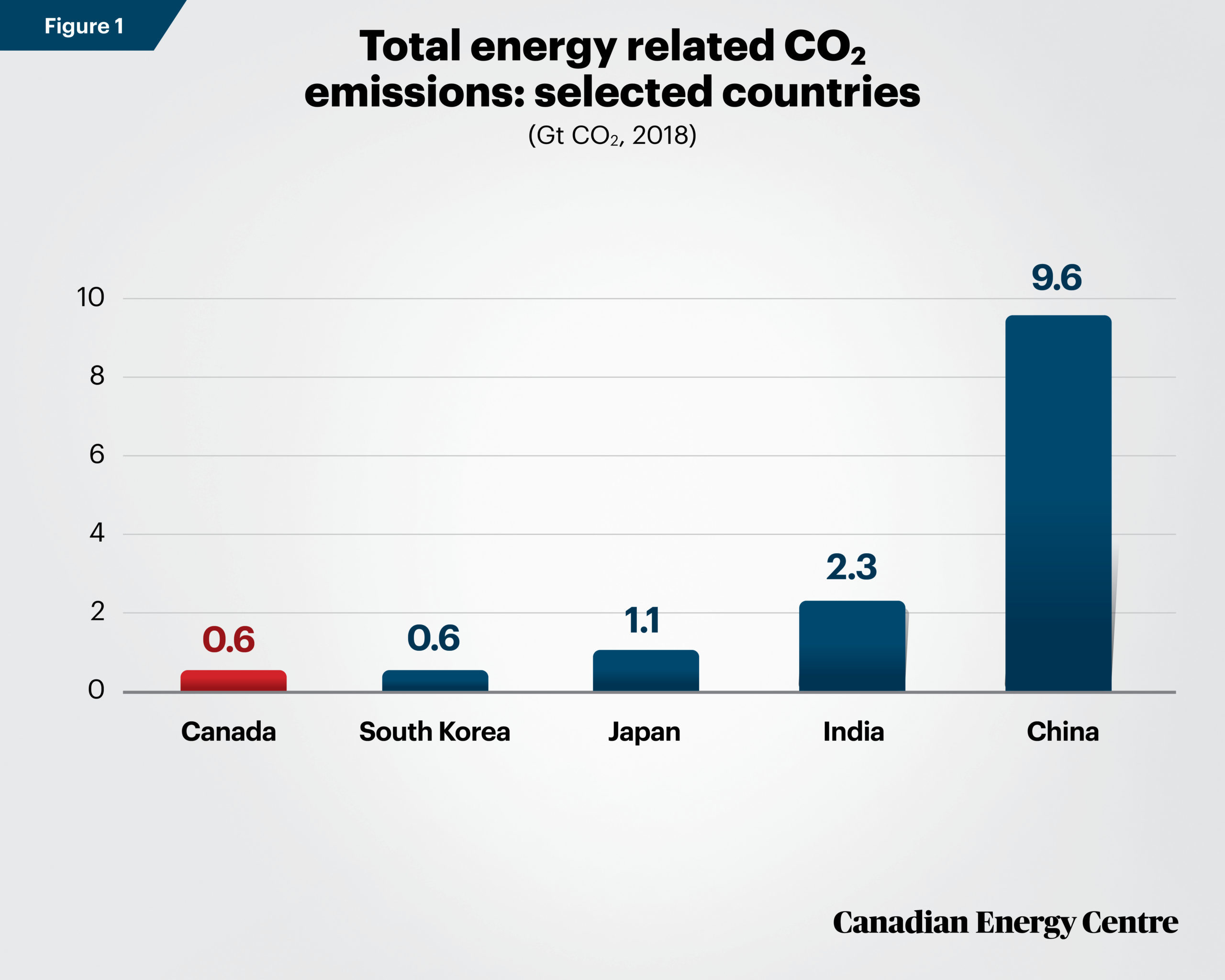
Source: Authors’ calculation from IEA (2020), (“CO2 Emissions from Fuel Combustion”, IEA World Energy Statistics database).
Carbon emissions from coal-fired power plants in gigatonnes
Coal-fired power plants accounted for 10.1 Gt, or 30 per cent of global energy-related CO2 emissions in 2018. Most of that generation occurs in Asia, with China, India, Japan and South Korea accounting for 6.45 Gt, or two-thirds of all coal-fired CO2 emissions (see Figure 2).
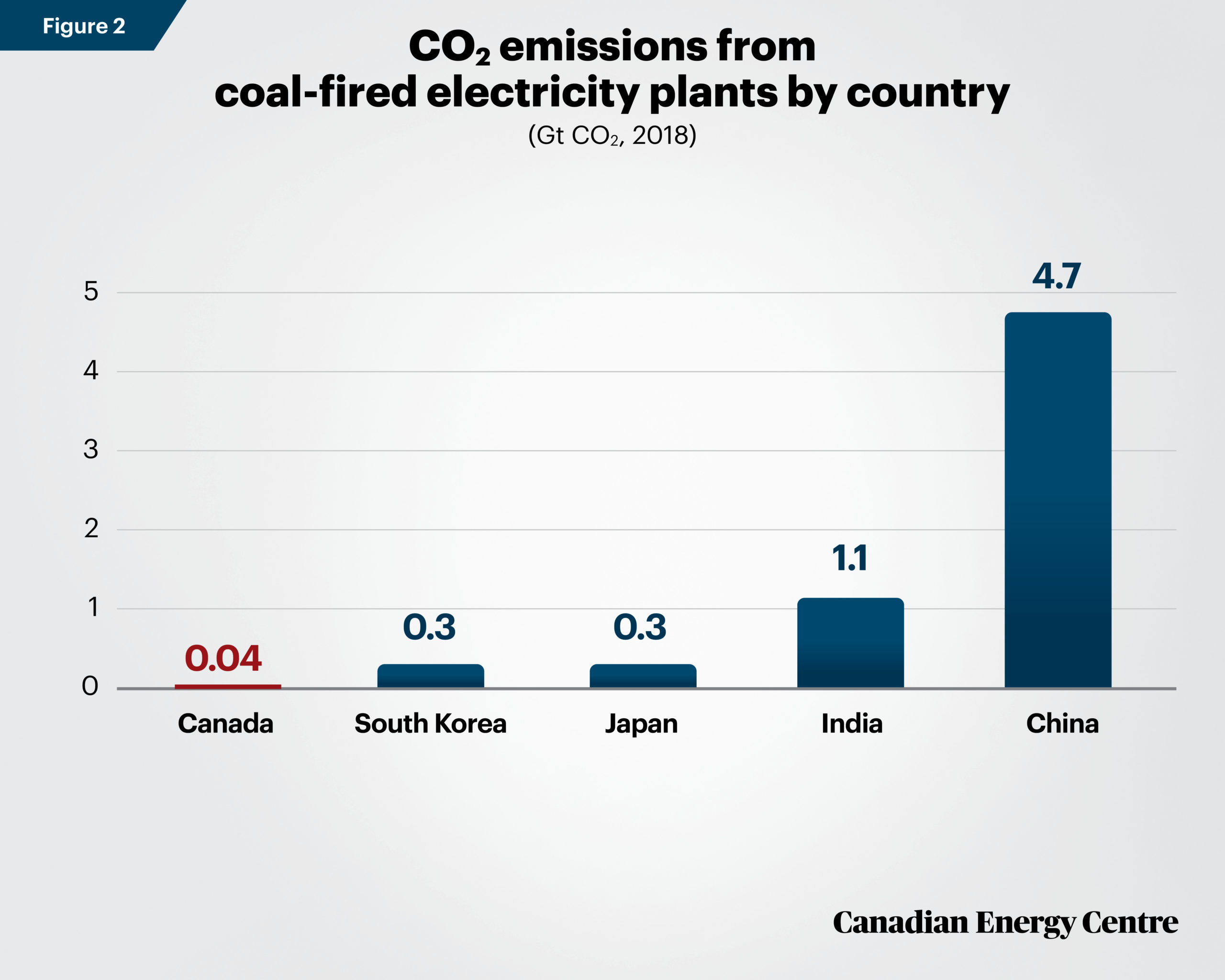
Sources: Authors’ calculations from International Energy Agency (“CO2 Emissions from Fuel Combustion” and energy statistics database).
Carbon emissions from coal-fired power by country as a percentage of total coal-fired CO2 worldwide
The level of carbon emissions from coal-fired power by country as a percentage of total global emissions from coalfired power varies. In 2018, South Korea was responsible for 2.5 per cent, and China 47.0 per cent. Canada, by contrast, accounted for 0.4 per cent of global emissions from coal-fired electricity generation (see Figure 3).
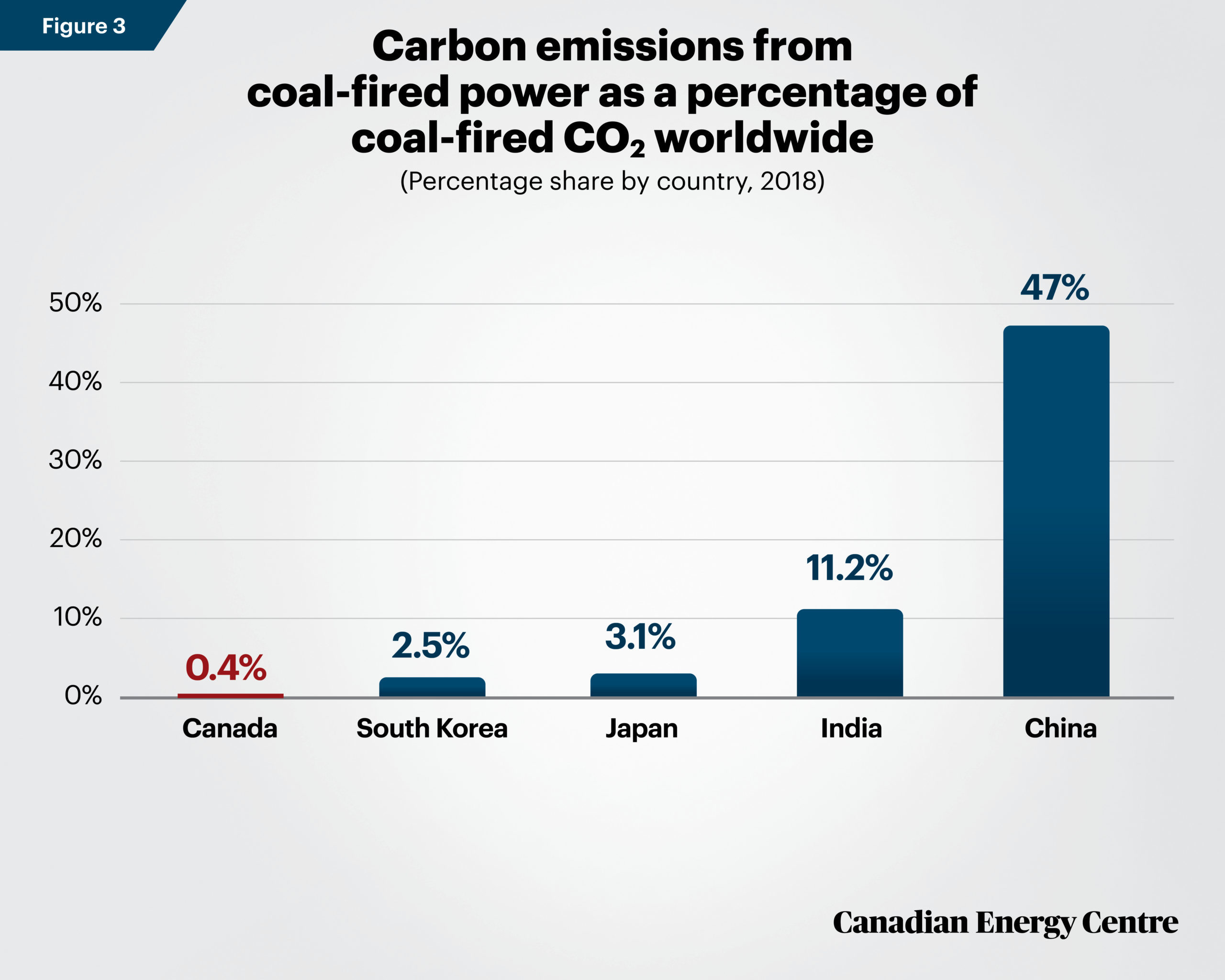
Sources: Authors’ calculations from International Energy Agency (“CO2 Emissions from Fuel Combustion” and energy statistics database).
Canada’s energy-related carbon emissions compared to other countries
To consider Canada’s carbon emissions in context, Canada’s total energy-related emissions (0.6 Gt in 2018) were about one-half of just India’s coal-fired emissions and about oneeighth of just China’s coal-fired emissions (see Figure 4).
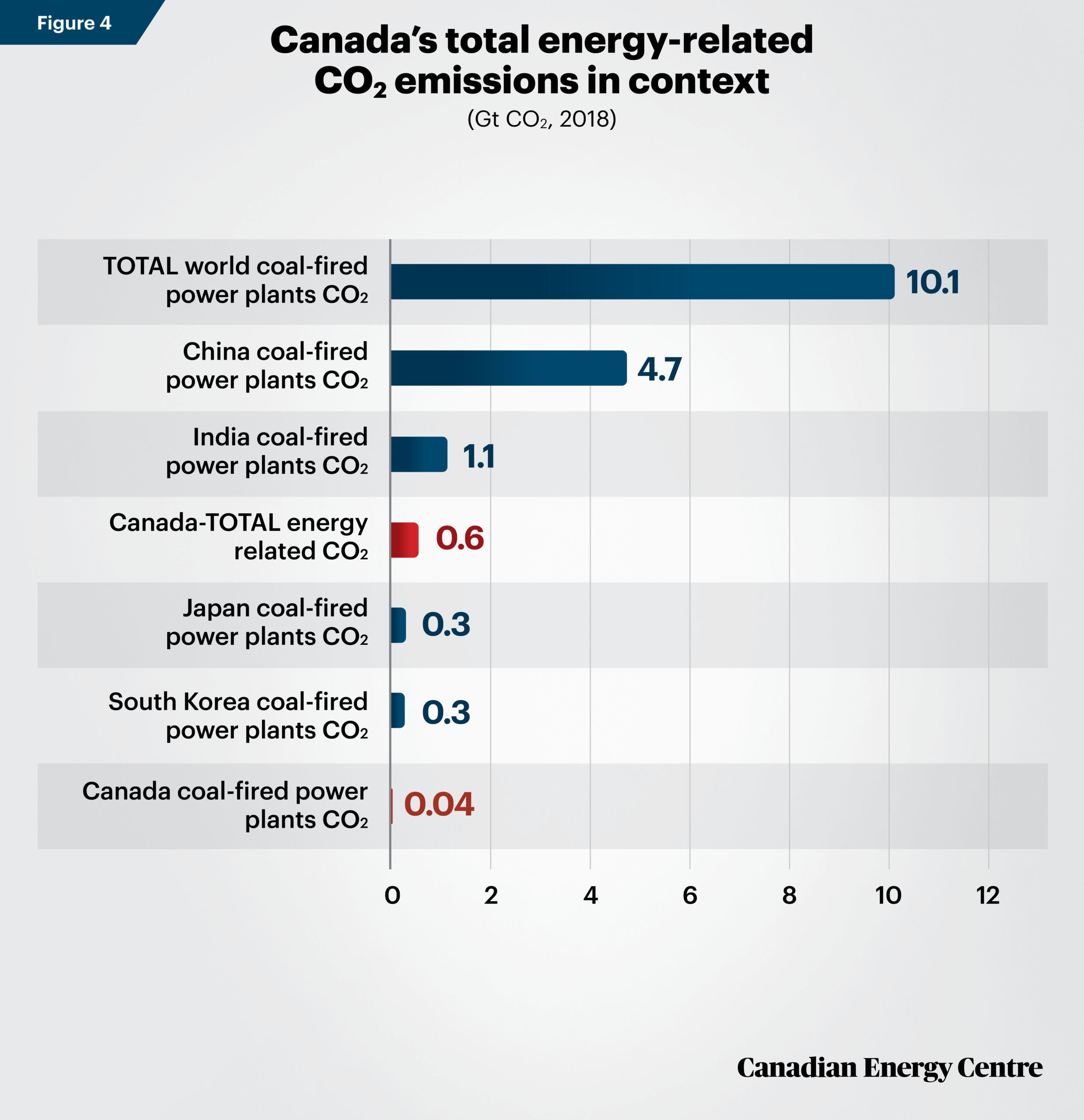
Sources: Authors’ calculations from International Energy Agency (“CO2 Emissions from Fuel Combustion” and energy statistics database).
The reality of coal-fired carbon emissions to come: 350 more coal plants under construction
At present, there are more than 350 coal-fired power plants under construction in the world.² This includes seven in South Korea, 13 in Japan, 52 in India and 184 in China.
In the first quarter of 2020 alone, China approved nearly 10 gigawatts (GW) of new coal-fired power. According to IEA World Energy Outlook 2020, China plans to build an average of 17 GW of new coal power generation capacity annually through to 2025. China has also started building and financing hundreds of coal-fired power plants in countries such as Turkey, Vietnam, Indonesia, Philippines, Egypt, and Bangladesh.
2. Of note, given that each electricity plant uses different technology, converting electricity produced (as measured in Gigawatts) to CO2 (Gt) emissions is not an available measurement.
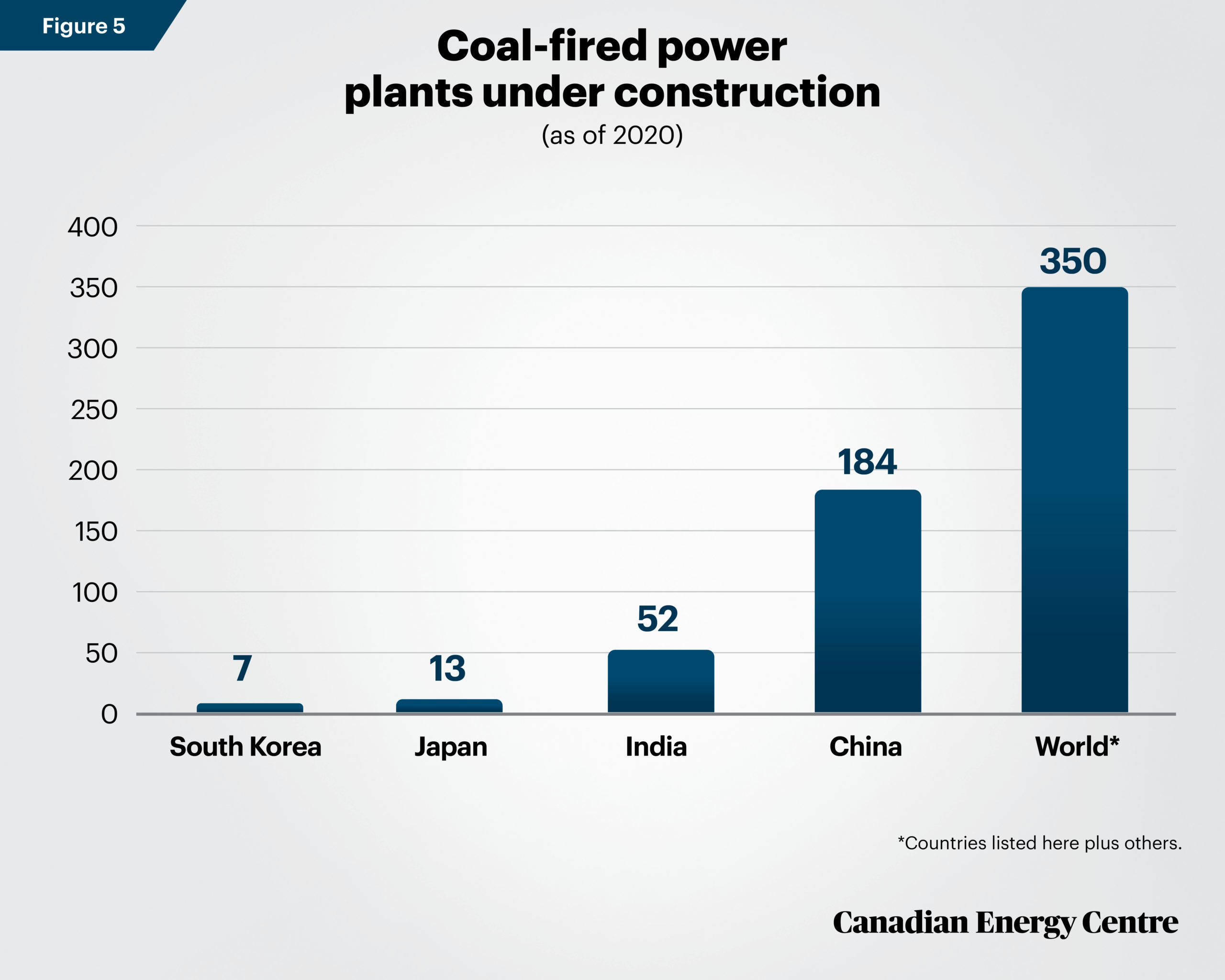
Source: Global Energy Monitor (2020).
Point One: Canada’s total energy-related carbon emissions are minimal relative to Asia’s coal-fired carbon emissions
The increased emissions from new coal-fired power plants worldwide will obviate any reductions in Canada’s energy-related carbon emissions as to make them practically meaningless.
Ignoring planned, future coal-fired power plants not yet in construction to consider only the ones under construction in Asia, those now being built will produce 40 times Canada’s coal-fired carbon emissions and three times Canada’s entire current energy-related carbon emissions.
Point Two: Opportunities exist for Canadian natural gas exports
China and India are ranked as the first and the second largest coal producers in the world. The increase in the new coal-fired generation in China and India is occurring in part because of the abundance of inexpensive coal reserves in both countries.
However, coal-fired power plants are significantly more carbon intensive than those that use natural gas. One way to help reduce emissions worldwide while benefitting the Canadian economy is to export liquefied natural gas (LNG) to countries now dependent on coal for power generation.
Natural gas is considered a relatively clean-burning fossil fuel as it produces fewer GHG emissions per unit of energy compared to coal. Carbon emissions from natural gas-fired power are about half the rate of coal-fired power per kilowatthour (KWh) of electricity generated. Natural gas is also more energy efficient as a plant fuel.
- On average, a typical coal-fired power plant is about 33 per cent efficient in converting heat energy into electric power;
- Most coal-powered plants can be converted to natural gas. A gas-fired plant is about 42 per cent efficient.
- Natural gas combined cycle power plants — in which waste from natural gas turbines is used to generate steam — can be designed with an efficiency as high as 60 per cent.
Switching from coal to natural gas-fired power provides the opportunity to use existing infrastructure to deliver the same energy services with lower emissions. According to IEA (2019), since 2010 coal-to-natural gas switching has reduced global emissions by approximately 0.5 Gt. Also, in many Asian countries natural gas demand has risen in recent years as a result of a major policy push to improve particulate air quality.³
As the IEA noted in 2019,
Given the time it takes to build new renewable generation capacity and to implement energy efficiency improvements, coal-to gas switching also represents a potential quick win for emissions reductions. There is potential in today’s power sector to reduce up to 1.2 Gt of CO2 emissions by switching existing coal-fired plants to natural gas, with the support of relative prices and regulation.
3. In countries such as India large-scale switching from coal to natural gas has been held back by supply constraints and affordability issues, as well as a lack of infrastructure.
The takeaway
The possibility for a transition from coal-fired electricity generation in Asia to gas-fired electricity generation exists. The corollary is that a potential market in Asia for natural gas extracted in and exported from Canada also exists. Canada has an opportunity to play a useful role in the global natural gas market.
Notes
This CEC Fact Sheet was compiled by Ven Venkatachalam and Mark Milke at the Canadian Energy Centre (www.canadianenergycentre.ca). The authors and the Canadian Energy Centre would like to thank and acknowledge the assistance of Professor Ross McKitrick and Dennis Sundgaard in reviewing the data and research for this Fact Sheet. Image credits: Shanghai skyline by Wei Zhu from Pixabay, Natural gas burner by Public Domain Pictures from Pixabay
Sources (Links live as of October 28, 2020)
British Petroleum Company (2020). BP Statistical Review of World Energy in 2020. <https://on.bp.com/3lQsOt0> Chen Xuewan and Yang Ge (2020). “China fires up coal power plant construction”, NIKKEI Asian Review <https://s.nikkei.com/31aOCaO>; Exxon Mobil (2019). Outlook for Energy: A perspective to 2040. <https:// exxonmobil.co/37cqs3E>; Global Energy Monitor (2020). Summary Statistics: Coal Plant Tracker. <https://bit.ly/3dBZ4NS>; IEA (2019), The Role of Gas in Today’s Energy Transitions.<https://bit.ly/2FAsjUE>; IEA (2020). World Energy Outlook 2020. <https://bit.ly/31b9OxC>; IEA (2020), “CO2 Emissions from Fuel Combustion,” IEA World Energy Statistics (database).<https://bit.ly/31ca8fp>. IEA (2020), Coal-Fired Power, IEA, Paris. https://bit.ly/34kRGTM; National Academy of Sciences (undated). Natural Gas, <https://bit.ly/355Z1FY>; Steve Inskeep and Ashley Westerman (2019). “Why Is China Placing A Global Bet on Coal?” NPR. <https://n.pr/3dukpsp>; U.S. Department of Energy, Energy Information Administration, Independent Statistics & Analysis. (202o). Global electricity consumption continues to rise faster than population. <https://bit.ly/2IzIK4L>.
Creative Commons Copyright
Research and data from the Canadian Energy Centre (CEC) is available for public usage under creative commons copyright terms with attribution to the CEC. Attribution and specific restrictions on usage including non-commercial use only and no changes to material should follow guidelines enunciated by Creative Commons here: Attribution-NonCommercial-NoDerivs CC BY-NC-ND.
